Our boat departed from Bangsal in northwestern Lombok around 13:00. We were 23 passengers, mostly german, six spanish, two irish plus Maeve, one danish, one swiss, and me, plus four crew. When ordering the trip in Gili Air we’d seen a photo of the boat and I’d asked if that was the actual boat. The agent replied enthusiastically, “No, old picture. We have a new boat, a bettter one”. In reality it may have been the worst boat in the eastern hemisphere. We stepped onto a high-sided wooden vessel with a clunky, disproportionate shape. There were no cabins, just an elevated aft deck covered in 21 thin mattresses with only enough headspace to crawl over. The wheelhouse was a tiny box amidships with awful visibility of the sea. The crew operated at the stern, where they had an area for preparing and cooking food and a keyhole toilet for everyone to use. Otherwise the boat was open-sided, with a canvas roof covering all but a small section of the bow to sun ourselves on. Somehow in spite of, or perhaps because of, our excessive complement of passengers found camaraderie immediately.
We motored on to a small, forested island that looked clearly to be an old volcanic crater. The centre was a large saltwaterr lake, where we lounged in the sun for a while. Maeve and I ventured to swim back to the boat and bring some beers ashore. But not only did we have to negotiate shallow water over sharp rocks and coral but a swell had also appeared, making the swim exhausting. After that, and the waterfall, and the lack of sleep, we assumed we would sleep through the afternoon but a little party formed on the crowded bow, with about half of the passengers chilling in the sun with some music and beers.
We negotiated with our fellows and managed to get a space to sleep, in a row with four others across the upper deck. Everyone was wedged into that dark hole like refugees, bumpping heads against feet and clambering over each other to go for a piss. The matresses were painfully hard so we woke every few minutes to turn but the night passed just fine, like a sleepover with good friends. Generally, the effort made by the tour providers was feeble. Breakfast was at best a small banana pancake, if not two slices of crustless white toast, one of which blew off Maeve’s plate before she could grab it. Lunch and dinner were recombinations of the same ingredients: egg, tofu, vegetables and rice, dumped on a rug on the main deck. Tea and coffee were essentially endless but we had to preorder soft drinks and beers before leaving and we paid for a load of beer that was never stocked onboard. The crew kept hidden from us as much as they could and the only one that spoke English, the so-called guide, barely spoke on the whole trip. We had no safety briefing so I decided to find the lifejackets for myself. There were no charts onboard or any equipment except a misted old compass. Navigation close to shore involved one crew member kneeling on the bow, gesturing enigmatically at the pilot. We didn’t know where we were going or what we were doing except that it would involve swimming, snorkelling, Komodo Island and finish on neighbouring Flores.
On the third day we entered a group of hundreds of small domed and sugarloaf islands that lie beetween the larger islands of Sumbawa and Flores. The land was parched beige with mottled greenery, resembling moorland, and where it met the sea, pink cliffs stood over strips of blazing, bone coloured beaches and turquoise water. We pulled up near two other boats off a sand bar in the open water amongst the islands. Divers were in the water around the other boats. Someone called out from our group, “There! Mantas!” Off the stern of another boat was a muddle of grey mats on the water surface. A few people grabbed masks and snorkles and jumped straight in, led by our new friends Rhea and Carmen, who had a lot of diving experience. But I didn’t see the point, the mantas were way off and heading further. But Maeve was keen to get in too so we took our gear and leapt over the side. As soon as we put our masked faces under the water, there was a manta ray, right under us. For several minutes we swam about in confused clusters, while one ray after another flew gracefully underneath us, angel-like with wings that rippled in waves.
The whole group afterwards was alight with the buzz of the encounter, fulfilling lifelong desires to contact the mystical kings of the rays. Our excitement continued as we drove further into the island chain and the drama of the seascape increased. Strange currents turned the water into glass-flat whirlpools or roiling sections of tiny wavelets like it was boiling. Shoals of small fish, panicked by the chase of larger predators, would surrface for a split-second, making the water fizz. Big fish, perhaps marlin or barracuda, occassionally danced upright over the water and splashed back under. Dolphins rose in smooth arches then vanished again. We stopped at a beach tinted pink by particles of red coral that belied the marine garden just offshore. We snorkelled over baby Clown Fish retreating in anenomes
Another short hop took us into the natural harbour of [n?] Loh Liang, on Komodo Island. I was finally able to wear shoes, lessening my limp slightly. We walked under a large entrance arch flanked by two carved dragons into a strange and strangely beautiful land. The same moorland hills we’d seen earlier covered the island, with lush forests filling the valleys between them. But up close the trees were pale and dry making the place feel dead. We were taken in one group by three or four rangers, each armed with a tall, forked wooden staff. They pointed out a mound of earth a couple of metres high, built as a nest for a Megapode, a kind of bush fowl, over three years. After a short way we reached a manmade watering hole in a clearing in the forest. There, right in front of us, motionless and flat like a fallen tree, was an adult male dragon, three metres long and heavy-set.
I knew more than most about Komodo Dragons, I’ve always been a bit of a geek for that kind of stuff, but I was shocked at the size of an adult dragon in the flesh. He was vast. His neck and jaws were disproportionately thick. Dishevelled claws were scattered limply on the floor at the ends of four powerful legs. He looked like he could kill a buffalo, as the dragons are known for doing. But he wasn’t threatening. He looked lazy and jobless as we encircled and took photos. Then a mature female appeared, lumbering towards us from the trees with that butch, swaying gait that they have. She was prettier, with darker skin and mottled patches of colour, although greyed ahead of sloughing her top layer. As with many large animal species, the female, though slighter, was more impressive to witness. She was alert, motive, purposeful. She approached us a few steps at a time, occasionally stopping, rearing her head and opening her mouth, perhaps to ward us off. She split our group in two and walked through the gap before vanishing back into the bush.
Although it was a treat to have an intimate view of the dragons, the park area felt quite contrived, like a rough zoo. The rangers didn’t seem to know much when pressed for details about the animals, although they were fun and chatty. Back at the park’s buildings, near the beach, five or six dragons of various size were piled together under the veranda of the snack shop. There was nothing wild in seeing them there, waiting for scraps to come from the humans. The rangers assured me the dragons were never fed but couldn’t fully explain why they returned to the human encampment every day for years without reward, especially huddled together like that when they are supposed to be solitary cannibals.That night we moored off-shore in relative solitude. The crew dragged a PA speaker into the foredeck and we took turns to plug our smartphones into it for music. Maeve grabbed her cosmetics and pens so the two of us could cover ourselves in pirate make-up and tattoos. We persuaded a couple of confident fellows to join us in pirate dress and daubings. In time, and as we drank through the remaining beer supplies, the rest of the passengers followed suit and soon we were a raucous, singing and dancing crew of scurvy sea-dogs.
We motored another short distance through an increasingly intricate and beautiful island-filled sea, to Rinca, the other big island in the Komodo group. We moored amidst mangroves and took another ranger-led walk, spotting a female dragon before returning to the main camp where many dragons were slumped, as on Komodo. We then made a final stop before reaching Flores, swimming to a perfect spit of white sand that projected from a curving white beach under a perfect little sugarloaf island. Back onboard, as we approached Flores, we lounged on the bow and talked and ribbed each other like old friends.The crew tied us alongside a much larger, wooden fishing vessel that was on the end of a row of three between us and the solid quayside. We had to climb with our luggage from one lurching deck to the next. Then, on land, the group disintegrated as everyone sought their lodgings for the night. Maeve and I thought south would take us through most of the town and best guesthouses but we walked for over an hour in the thirty-degree heat, rucksacks and backpacks weighing down our sweaty bodies. I limped painfully the whole way. Everywhere wanted at least Rp350 for small, charmless, and sometimes downright filthy, rooms. So we turned back and traversed the entire town to try the northern end. In the centre, we tried our luck at a modern bar called Lounge. They showed us a room above the bar. It had a glass double doorway, handmade wooden shelving, a swinging, suspended bed, and an ensuite made out in wood and stone, with a torrential, scolding-hot shower. It was sumptuous. We got it for Rp300. Our luck was back in.
Labuan Bajo is a charming maritime town, set in a hillside crescent. The centre has a handful of cute cafes and restaurants on a main street parallel to the shore, overlooking a large, island-dappled bay full of wonky wooden ships. We watched the sunset from “Sky Bar”, directly above our room. We sipped cold mojitos, our bodies scrubbed and moisturised, wounds treated and dressed. The sun fell right into the water, beyond the ships and triangles of tree covered islands. We had arranged to regroup at a restaurant that the Lonely Planet had placed right in the town centre but we found it to be a car ride away, up the hill. It was fully-booked and none of our new, old friends were there. We ended up back at Lounge, with a couple of strays we’d bumped into in town. Then, by degrees, the entire group except a few of the less social ones gathered and we ate a feast of grilled fish and fresh fruit. We ventured to a couple of bars, as the group dwindled, and I finally left the four remaining people at a hilltop music venue in the wee hours, dancing with locals and some dreadlocked ex-pats.The next morning we needed to get to Labuan Bajo airport for our flight away from Nusa Tenggara, to Medan, in Sumatra, at the northwestern extreme of Indonesia. Maeve stopped a scooter rider in the street and asked him to take us to the airport. He called the another man standing by a scooter a couple of metres away. We had our ride.
Maeve grabbed a scooter rider, who then acquired another besde us, to take us 1.5 km. Like “you, and… you’ll do”. Saw New steel terminal but half-built. Airport is wooden tower with tiny terminal. Staff enjoying themselves, 3-5 manning each station. Sat on floor. Most flights delayed, worried at missing connection in Denpasar. Our flight left 40 mins late but that wasn’t considered to be delayed.

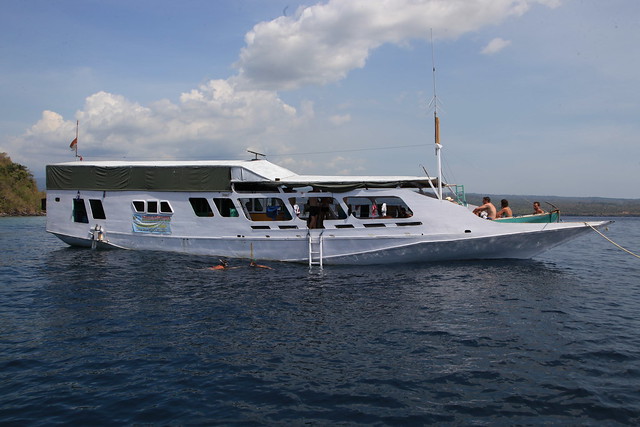


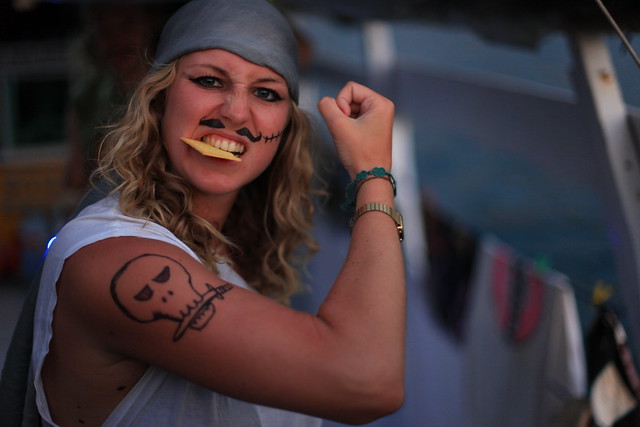

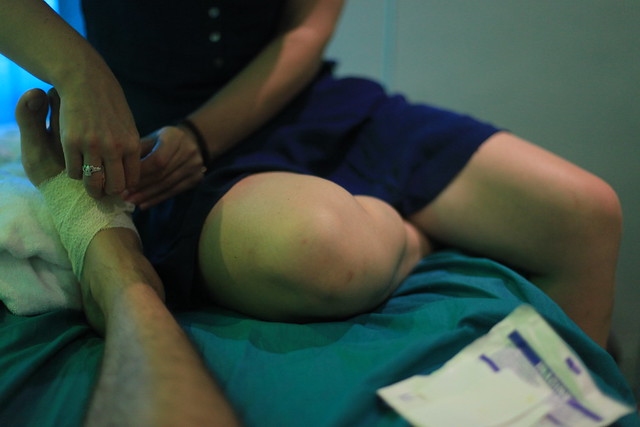
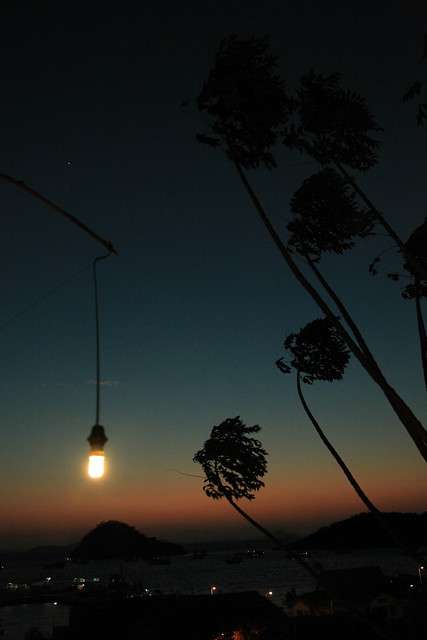
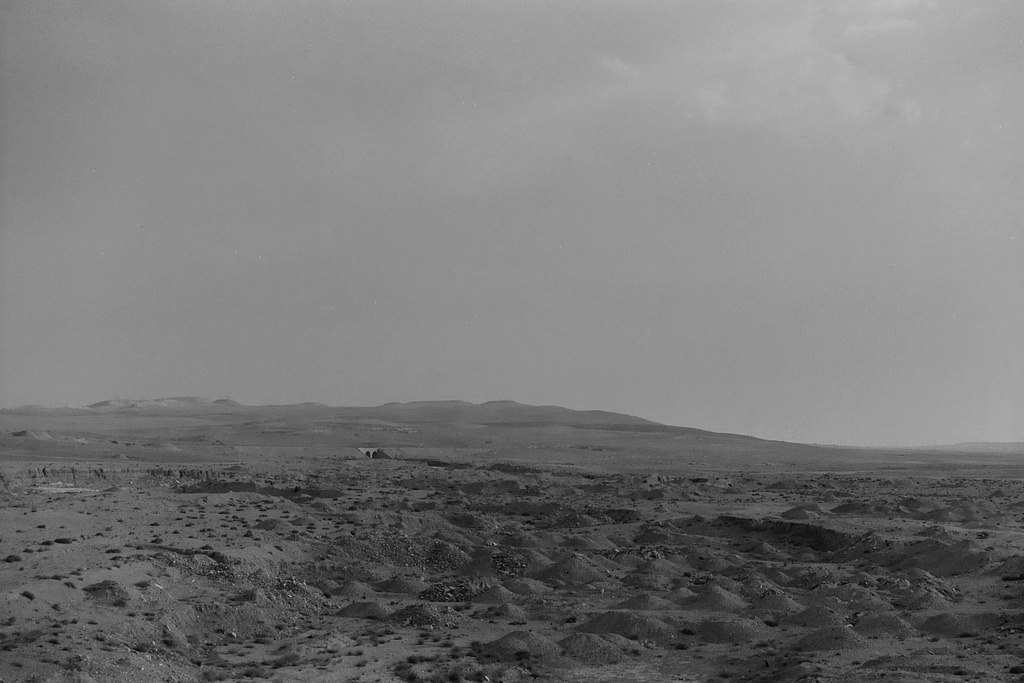


Leave A Comment